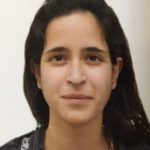Link to Pubmed [PMID] – 27566438
Link to DOI – 10.1111/mmi.13490
Mol Microbiol 2016 12; 102(5): 775-791
To fuel the tremendously fast replication of Plasmodium liver stage parasites, the endoplasmic reticulum (ER) must play a critical role as a major site of protein and lipid biosynthesis. In this study, we analysed the parasite’s ER morphology and function. Previous studies exploring the parasite ER have mainly focused on the blood stage. Visualizing the Plasmodium berghei ER during liver stage development, we found that the ER forms an interconnected network throughout the parasite with perinuclear and peripheral localizations. Surprisingly, we observed that the ER additionally generates huge accumulations. Using stimulated emission depletion microscopy and serial block-face scanning electron microscopy, we defined ER accumulations as intricate dense networks of ER tubules. We provide evidence that these accumulations are functional subdivisions of the parasite ER, presumably generated in response to elevated demands of the parasite, potentially consistent with ER stress. Compared to higher eukaryotes, Plasmodium parasites have a fundamentally reduced unfolded protein response machinery for reacting to ER stress. Accordingly, parasite development is greatly impaired when ER stress is applied. As parasites appear to be more sensitive to ER stress than are host cells, induction of ER stress could potentially be used for interference with parasite development.

